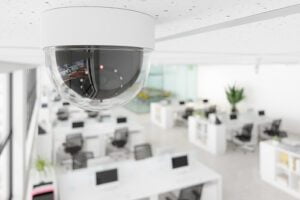How to Use CCTV Cameras for Employee Monitoring

Using CCTV cameras for employee monitoring is a topic of interest for many companies around the world. It is a sensitive issue that requires careful handling to avoid any legal or ethical problems. In this article, we will discuss how to use CCTV cameras for employee monitoring in a responsible and effective way.
-
Define the Purpose of Employee Monitoring
Before installing CCTV cameras, you need to define the purpose of employee monitoring. It can be for security reasons, to prevent theft or other illegal activities, or to ensure that employees are following company policies and procedures. It is important to communicate the purpose of employee monitoring to your employees and obtain their consent.
-
Inform Employees about CCTV Cameras
Inform your employees that CCTV cameras will be installed in the workplace. Provide them with information about the location of the cameras, the purpose of employee monitoring, and how the data will be used. You should also explain how long the data will be stored and who will have access to it. Transparency is key to avoiding any legal or ethical issues.
-
Choose the Right Locations for CCTV Cameras
Choosing the right locations for CCTV cameras is crucial to ensure effective employee monitoring. It is important to install cameras in areas where employees have a reasonable expectation of privacy, such as restrooms or changing rooms. You should also ensure that the cameras are not used to monitor employees outside of working hours.
-
Use CCTV Cameras for Specific Purposes
CCTV cameras should be used for specific purposes only. They should not be used to monitor employees for no reason or to discriminate against them. You should define the specific purposes of employee monitoring and ensure that the cameras are only used for those purposes.
-
Use CCTV Cameras in Conjunction with Other Monitoring Tools
CCTV cameras should be used in conjunction with other monitoring tools, such as access control systems or time and attendance software. This will help to ensure that the data collected by CCTV cameras is accurate and reliable. It will also help you to identify any discrepancies between the data collected by different monitoring tools.
-
Store CCTV Data Securely
CCTV data should be stored securely to prevent unauthorized access or use. You should ensure that only authorized personnel have access to the data and that it is stored in a secure location. You should also have a clear policy on how long the data will be stored and how it will be disposed of.
-
Regularly Review CCTV Data
You should regularly review CCTV data to ensure that it is being used for its intended purposes. You should also review the data to identify any issues or problems with employee behavior or performance. Regular review of CCTV data will help you to identify areas for improvement and make informed decisions about employee monitoring.
In conclusion, using CCTV cameras for employee monitoring can be an effective way to improve security and ensure compliance with company policies and procedures. However, it is important to use CCTV cameras in a responsible and transparent way to avoid any legal or ethical issues. By following the guidelines outlined in this article, you can use CCTV cameras for employee monitoring in a way that is both effective and responsible.